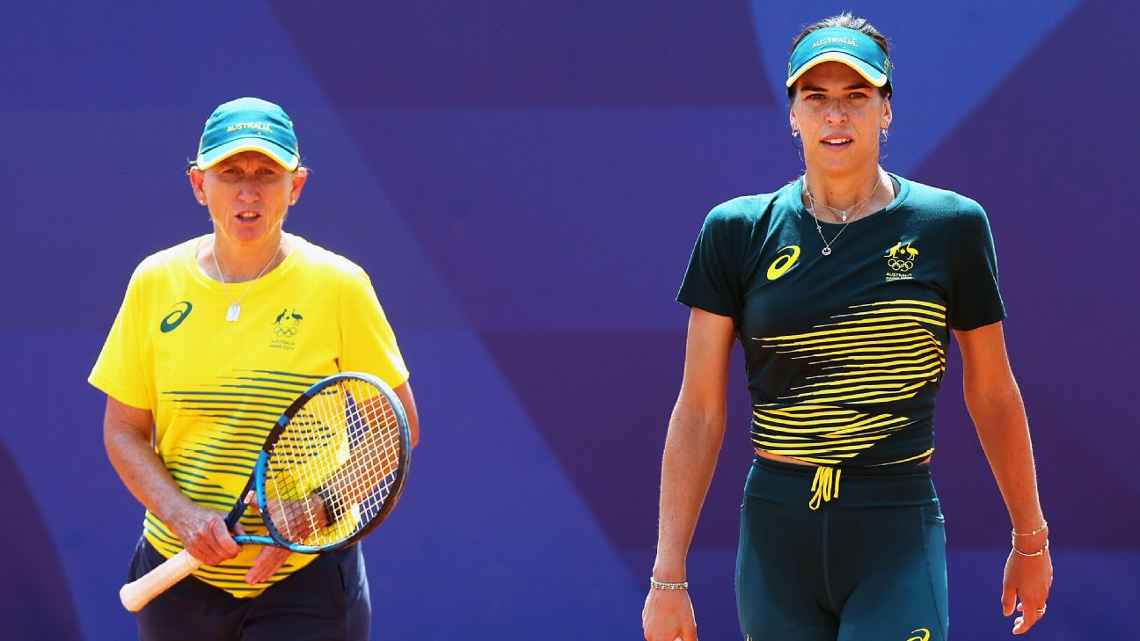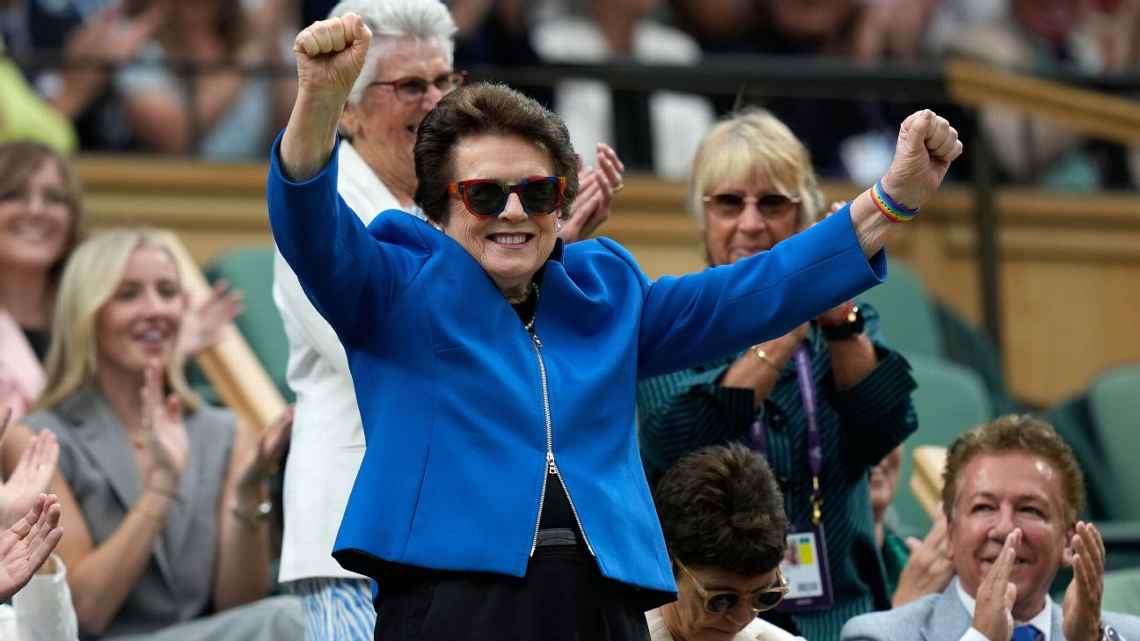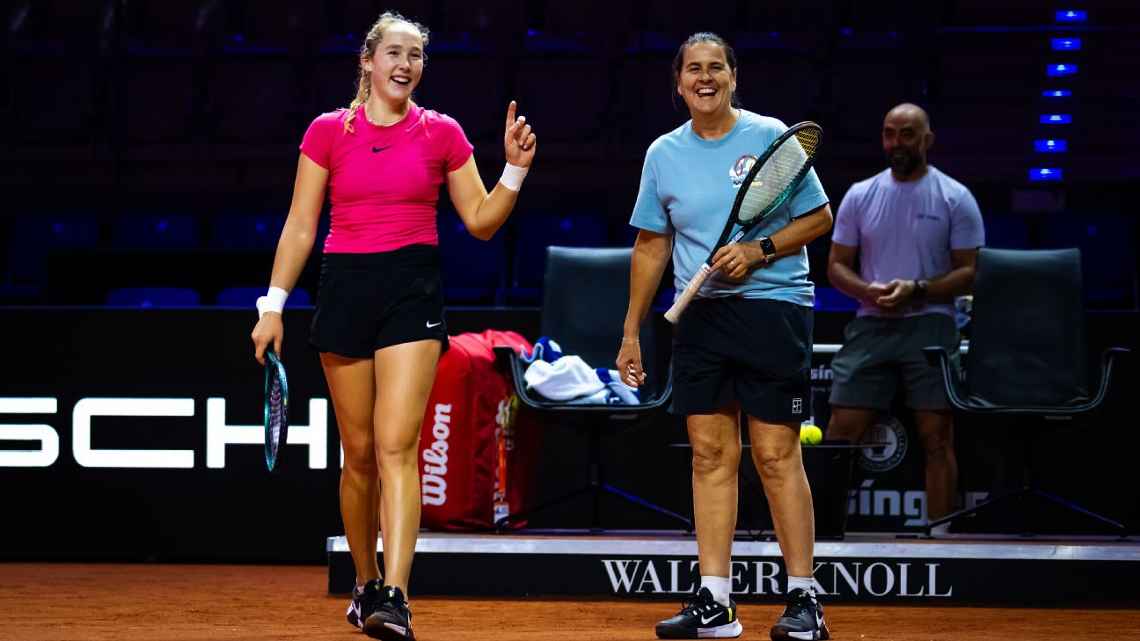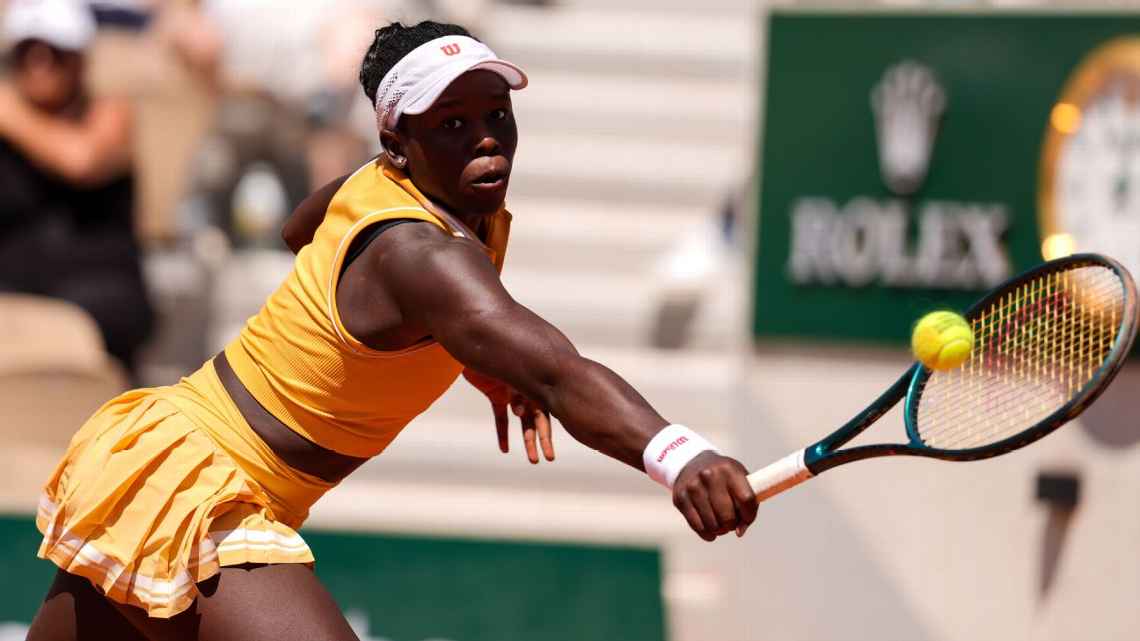DURING HER FINAL months as a professional tennis player, Sandra Zaniewska didn`t know what her future held after retirement. However, one thing was certain: she had no desire to stay involved with tennis.
Throughout her playing career, people often asked if she was interested in coaching, but her answer was always a firm `No chance.` The idea held no appeal, and the prospect of enduring the grueling, constant travel of the tour for someone else`s career felt like torture.
But when her playing days ended in 2017 at age 25, her friend Petra Martic asked for temporary help as she recovered from an injury and returned to the tour. Zaniewska had no immediate plans or significant funds, so she agreed to assist for a few weeks before moving on from tennis entirely. Yet, those few weeks quickly stretched into months, and months into years. Under Zaniewska`s guidance, Martic climbed significantly in the rankings, from just inside the top 100 to No. 14 globally.
Suddenly, Zaniewska, the reluctant coach who wanted anything but tennis, was captivated. She realized she had discovered her true calling.
`I loved it, and I remember thinking, `Wow, I was meant to do this job,“ Zaniewska shared. `From that moment on, I just stayed and, to be honest, I didn`t even want to explore anything else. But it really hit me after [Petra and I] stopped working together about two years later because then I was able to look back at the time and I was like, `This really was the best adventure that I had in my entire life.“
Since her time with Martic, Zaniewska has coached Alize Cornet and has been working with Marta Kostyuk, currently ranked No. 25, since 2023. However, Zaniewska acknowledges her path is remarkably rare – perhaps `one in a billion,` she muses. She remains one of only a handful of women coaching at the sport`s elite level. Coaching partnerships in tennis change frequently, making exact numbers difficult to track, but it`s estimated that only 12 of the 128 players in the 2025 French Open women`s main draw had a female head coach. Mirra Andreeva, who reached the quarterfinals under the guidance of Conchita Martinez, was the last remaining player with a woman head coach in that event. Notably, no players in the men`s main draw had a woman head coach.
For a sport that champions equality and boasts a history of breaking barriers, such a significant disparity in coaching ranks is striking. How can there be so few women coaches, particularly for women players? This stark imbalance has not gone unnoticed by those within the sport – and it`s an issue that coaches like Zaniewska, along with organizations such as the WTA, USTA, and Tennis Australia, are actively striving to change.
`I feel like I was really, really lucky in the path that I had,` Zaniewska stated. `I truly want more women to have these opportunities because there could be more stories like mine. I know there are other eager and talented coaches out there who just aren`t getting the chance to prove themselves. I`m in this position now, and I want to hold the door open to let as many women through as possible.`

THERE ISN`T A SINGLE simple explanation for the persistent scarcity of women coaches on the professional tour.
However, several probable factors exist, many of which are deeply embedded in the sport`s culture and broader societal norms. Nicole Pratt, a former player who transitioned to coaching and now leads women`s coaching at Tennis Australia, dedicated years to studying the nuances of this issue while developing the federation`s Coach Connect program, designed to recruit and nurture women coaches.
`It`s pretty deep,` Pratt, who currently coaches Storm Hunter and Kimberly Birrell on tour, commented. `The complexity of `Why?` is multidimensional, involving four distinct layers.`
Pratt believes the issue often begins with the individual coach and their personal self-belief or lack of confidence. But this is merely one piece of the puzzle. Beyond the individual, she identifies `interpersonal and organizational layers,` where gender bias frequently plays a significant role.
`We know that the majority of people in sports leadership are male, and this can often inadvertently create obstacles for women coaches,` Pratt explained. `I hear this repeatedly from women coaches. They are often told, `You`ll be great with younger girls,` and they get pigeonholed into that specific role.`
Pratt further elaborated on the next layer, a deeply ingrained `social cultural one.` She noted that many young girls are not encouraged to be brave or take risks in the same way young boys are. This can later translate into women being hesitant to seek opportunities – not wanting to appear overly assertive or forward – or doubting their own capabilities.
Additionally, she highlighted the challenge for some women who wish to have a family or already do. The prospect of traveling the world for 11 months of the year can be daunting, and in some cases, simply incompatible with parental responsibilities. While the WTA recently introduced a new maternity leave policy for players, coaches are not included, as they are typically employed directly by individual players and often lack traditional benefits.
Another significant factor contributing to the disparity is what many players consider an essential part of their team: a hitting partner.
While top players can afford extensive teams including a head coach and a hitting partner, the average tour player often cannot afford both on the road. Consequently, many players seek coaches who can also fulfill the hitting partner role. Pratt, who retired in 2008, observed that during her playing days, many peers hired `young, inexperienced male coaches` primarily because they could hit, which was all the player could afford.
`In recent years, prize money has increased, allowing many players to afford larger teams, so this is changing,` Pratt noted. `But for some players, there`s still this mindset of, `How can I get the most value for my money?` rather than, `Who is the truly best coach I can find?“
Although there`s no official registry of hitting partners, WTA Director of Member Services Mike Anders mentioned he is unaware of any women currently serving in that capacity on the tour. Similar to how WNBA and women`s college basketball teams often use male practice players, most women tennis players prefer to train with men, if not their tour-level peers. (The common reasoning is that if a woman were skilled enough to hit with the top players, she would likely be competing on tour herself.)
Serving as a hitting partner can be a valuable stepping stone for aspiring coaches. It offers a clear entry point into the professional sport for those who played collegiately or at lower professional levels, often leading to further opportunities. Sascha Bajin, Michael Joyce, and Andrew Bettles, all currently head coaches for players in the Roland Garros main draws, began their professional careers as hitting partners.
`Many male coaches on tour start as hitting partners and then evolve into coaches, but they always retain the ability to hit when needed,` Zaniewska observed. `And I think players might look at female coaches who cannot hit and think, `Okay, can she really help me? What if I need someone to hit with me at a tournament?“
Simply being immersed in the tour environment – a relatively small, closely-knit community – gives hitting partners an advantage in building connections and subsequently securing future coaching or team roles. Anders described this as a `big roadblock` for women coaches aspiring to break into coaching at the top level.

WHILE CELEBRATING THE 50th anniversary of the WTA`s founding at Wimbledon in 2023, Billie Jean King directed her renowned advocacy towards the lack of women coaches in the sport. That year, only six players in the tournament`s main draw were working with a female coach.
`Terrible. Extremely disappointing,` King told The Associated Press in an interview that gained considerable attention at the time. `It`s about society, absolutely. You have to see it to be it. So if you don`t see a woman up there as a coach, it doesn`t even cross your brain. How do we get the top players to hire them? We`ve got to solve the problem.`
The WTA was already acutely aware of the issue. It was evident not only in the lack of women in player boxes but also through former players` frequent complaints about the difficulty of entering coaching despite their impressive playing careers. The problem became particularly clear when the WTA launched a coaching program in 2017, primarily to ensure coaches met qualification standards, allowing the organization to see the raw numbers firsthand.
To directly address the disparity, the WTA initiated the Coach Inclusion program in 2021. This ambitious undertaking aimed to significantly increase the number of women coaches. At the program`s launch, only four women coaches were working with players ranked within the top 200.
`The core purpose of the program was to dismantle the barrier of access we were observing,` explained Mike Anders, who manages the program. `Tennis is a relatively small ecosystem, and the program effectively combines targeted coaching education with practical, real-world placement in the tour environment, alongside fostering mentorships and facilitating connections.`
In its inaugural year, the program supported 10 promising coaches in North America. Since then, 34 women have successfully completed the program. It has since expanded to include the Asia-Pacific region, South America, and the United Kingdom, with plans for further expansion into the rest of Europe and the Middle East in upcoming years. The program currently has spots for a total of 20 women across all participating regions this year.
The ATP also has a coaching program but confirmed it does not have any initiatives specifically focused on increasing the number of women coaches. Women coaching in men`s tennis remains uncommon, although Pratt previously coached Marc Polmans, and Amelie Mauresmo, now the French Open tournament director, worked with Andy Murray for almost two years, and later with Lucas Pouille.
The WTA program takes participating coaches to tournaments in their respective regions, aiming to fully immerse them in the coaching experience. This includes working alongside players and their teams, learning the practicalities of tournament logistics, and meeting numerous people within the sport.
Experienced coaches like Zaniewska and Pratt are often involved, allowing program participants to shadow them when possible. Given that every tournament operates differently – and seemingly simple tasks like booking practice courts or arranging transportation can vary dramatically between events – learning from a seasoned coach or simply knowing who to ask for help in the future can be crucial.
`We had one participant who was coaching a top 100 player for a while before joining the program, and she shared how uncomfortable and out of place she felt,` Anders recounted. `She didn`t know who to turn to when her player asked her to schedule practices with other coaches or inquired about media obligations. Her player expected her to handle all of that. But by gaining hands-on experience over the course of a year, she was hired immediately after completing the program. She now knew so many contacts who could assist her, which made her feel like she truly belonged.`

At the Italian Open last month, the most recent event for which the WTA has confirmed data, there were 169 accredited coaches across the main draw and qualifying rounds. Of these, 26 (just over 15%) were women. Within the WTA`s Tour Coach program – the 2017 initiative which includes some, but not all, current coaches – 24 of the 125 registered coaches (just over 19%) are women. While still far from achieving equality, Anders finds this progress encouraging.
The program also boasts several success stories. Anders estimates that five women who participated have gone on to become their home country`s Billie Jean King Cup captain, and others have become coaches on the WTA Tour, including Fanni Varga. Varga was named Danielle Collins` coach just before Indian Wells in March. A former junior player from Hungary who played collegiate tennis at Division II Southwest Baptist University, Varga had never initially considered a coaching career. After a summer internship spent entirely in front of a computer with plans to pursue finance after her Master`s degree, several conversations with her college coach prompted a change of heart.
When John Bryant retired after 51 years, Varga was appointed head coach for both the men`s and women`s teams at Southwest Baptist. Over four years in that role, she guided the men`s team to an NCAA tournament Elite 8 appearance and the women`s team to a program-high ranking of No. 7. Varga fell in love with coaching and knew she wanted to do more and continue improving.
Encouraged by those closest to her, she applied for the Coach Inclusion program. Varga was excited about the prospect of making new connections and felt strongly about the need for more women coaches in tennis.
`It was very important to me because I had a very bad experience,` Varga shared. `I had a great female coach until I was 14 and a wonderful experience with her. Then, unfortunately, I had really bad male coaches for the rest of my junior years. They didn`t listen when I was injured, told me to stop complaining, and overpushed me. So, this initiative to help become a better coach for other girls, younger girls aiming to become professional, was a significant inspiration for me.`
Varga, 32, wasn`t initially sure if she wanted to coach at the professional level, but being exposed to the tour through the program was a `great eye-opener.` She realized it aligned well with her `super competitive` nature and her desire to help players achieve their best. She estimates she spoke with over 20 coaches during her time in the program, which only further fueled her passion and drive.
`We had the best time,` Varga recalled. `We shared many experiences, similar goals, similar challenges. At tournaments, we would meet for dinner, discuss what we learned, observed, and experienced. That multiplies the knowledge you gain in one week. Everyone was there with shared objectives, and honestly, I miss those weeks a little.`

Based in Los Angeles, Varga met Collins for the first time the week before Indian Wells in March. Following a productive practice week, and despite an early exit from the tournament, Collins asked Varga if she would continue working with her. Varga is currently planning to work full-time with Collins through Wimbledon in July before returning to her responsibilities at a Tier 1 tennis academy. However, she hopes to rejoin Collins for part of the North American hard-court swing in some capacity.
During one of Varga`s initial practice sessions with Collins, they practiced alongside Robin Montgomery and her coach Kathy Rinaldi. For Varga, this was a full-circle moment: Rinaldi was one of the coaches she had spoken with during the program – and perhaps the one who had inspired her the most. Rinaldi`s primary role is head of women`s tennis at the USTA, which is one of the federations heavily involved with the Coach Inclusion program.
In addition to continuing that partnership, the USTA states it is equally committed to making coaching more inclusive, starting at the foundational level. It is launching its own coaching program later this summer, specifically focusing on increasing the number of women and people of color in coaching roles. Megan Rose, the USTA`s Managing Director and Head of Business Development and Operations, and a former player and coach herself, is leading this new initiative. She believes it will improve the sport and further its growth in the United States.
`Having diverse representation [of coaches],` Rose told ESPN, `Not just women, but people of color and individuals with disabilities, ensures we appropriately represent the player base we aim to grow to 35 million. It`s not only about visibility but also validation. Seeing coaches from these diverse backgrounds shows young girls there`s a pathway for them, and for women, especially college tennis players, it illustrates a path not just into coaching, but also into leadership within tennis overall and within various sports organizations.`
Rose stated that the organization has worked to identify the specific obstacles that prevent or slow the increase of women in coaching, hoping to provide targeted support. She noted that motherhood was a clear barrier, citing the extensive time commitment and travel required at higher levels, and the need to develop innovative solutions.
`We`ve been thinking extensively about how we can collaborate with facilities to create structures that support mothers returning to coaching,` Rose said.
This challenge is one that current women coaches on tour face regularly. Pratt has 10-year-old twin daughters in Australia. Being away from home for weeks, and sometimes months, at a time presents difficulties.
`It can certainly be lonely,` Pratt admitted. `Especially when you`re on the other side of the world, away from your family. I tried to set a personal rule of not being away on tour for more than three weeks, but that often gets extended.`
A sense of camaraderie exists among the women coaches on tour. They maintain a group chat where they share resources, ask questions, coordinate practice sessions between players, and even brainstorm ideas. One frequent topic of discussion is how to address the hitting partner imbalance. Pratt mentioned discussing this with Martinez at a recent clay-court tournament in Europe.
`I said to Conchi, `You know what would make a real difference for female coaches? If the tournament provided hitting partners specifically allocated to us,“ Pratt recalled telling Martinez. `There aren`t many of us right now, so if we had that option, players might look at [hiring a woman] differently. There are still barriers, but there are also potential solutions.`

For the moment, the number of women coaches remains low, but it is showing a gradual increase. Some younger players, including 18-year-old Victoria Mboko, who qualified and reached the third round at Roland Garros, recognize the benefits of working with a woman coach.
`Of course, having a female there, you relate a lot more,` said Mboko, who is coached by former world No. 3 Nathalie Tauziat. `I mean, they understand the women`s game better. They know the struggles that a woman can face on tour. From that perspective, it can be slightly easier to understand certain things that a man might not.`
However, there is still an added responsibility felt by those currently in these roles, knowing they represent more than just themselves. There is a strong collective desire to open doors for others and smooth the path for the next generation.
While speaking with ESPN, Zaniewska was told about the coach Mike Anders mentioned who felt intimidated by the logistical aspects of tour life. She immediately vowed to contact Anders and offer her help if other women coaches faced similar questions.
`Because you don`t want those things to derail you,` she emphasized. `Something like that can shatter your confidence and become a major setback. I have no control over the exact number of female coaches on tour now or in the future. I can only contribute my small part. We have to support each other.`






